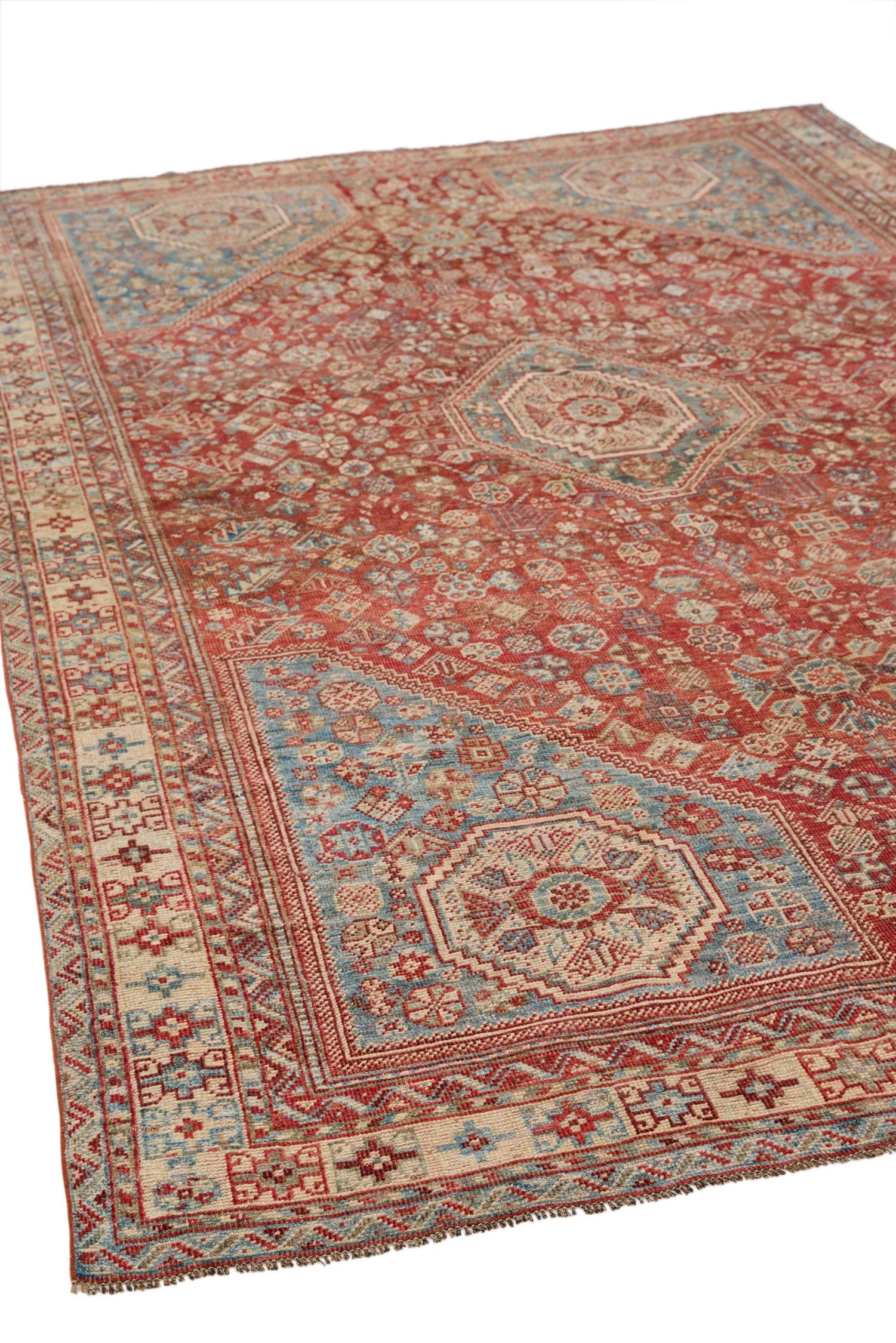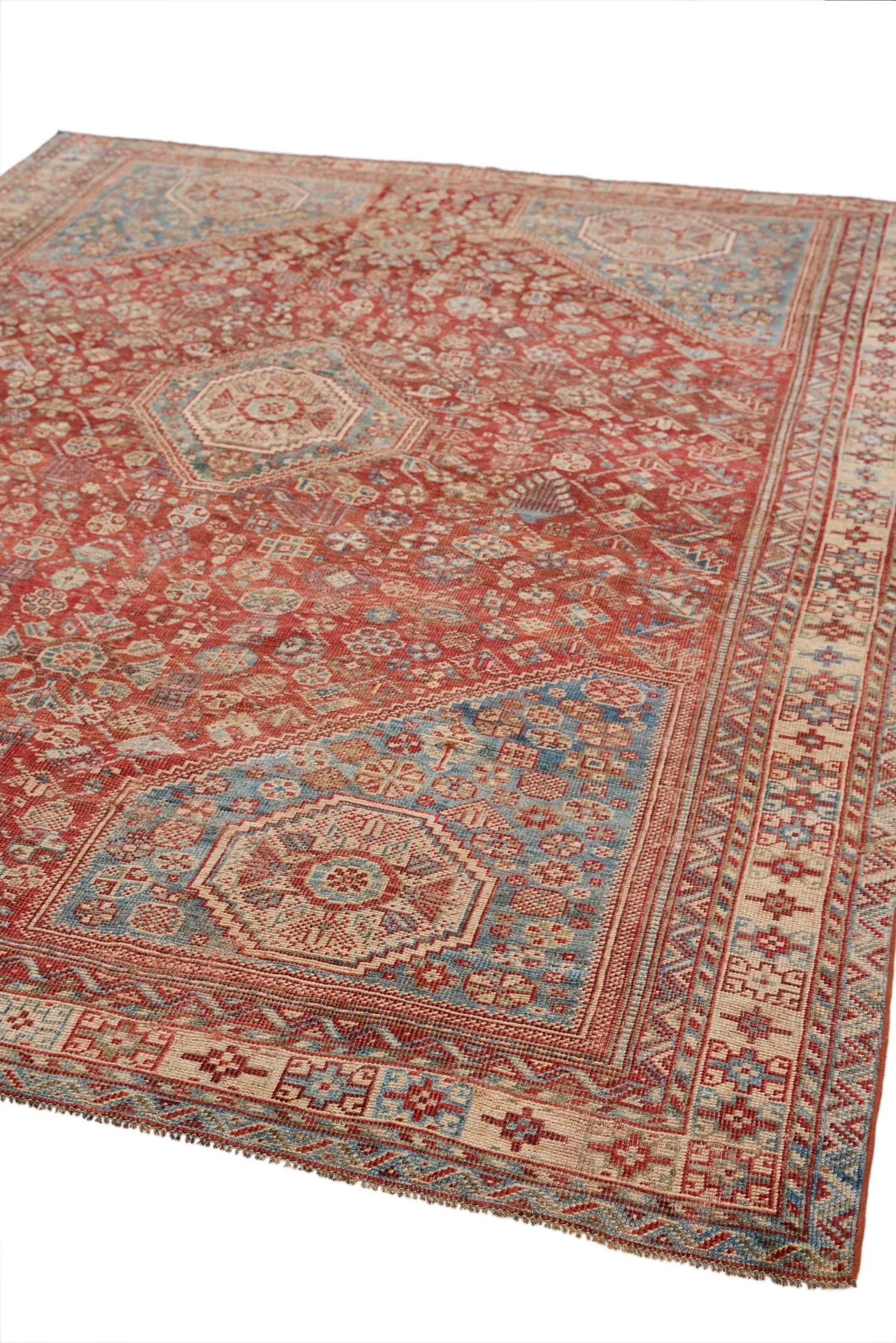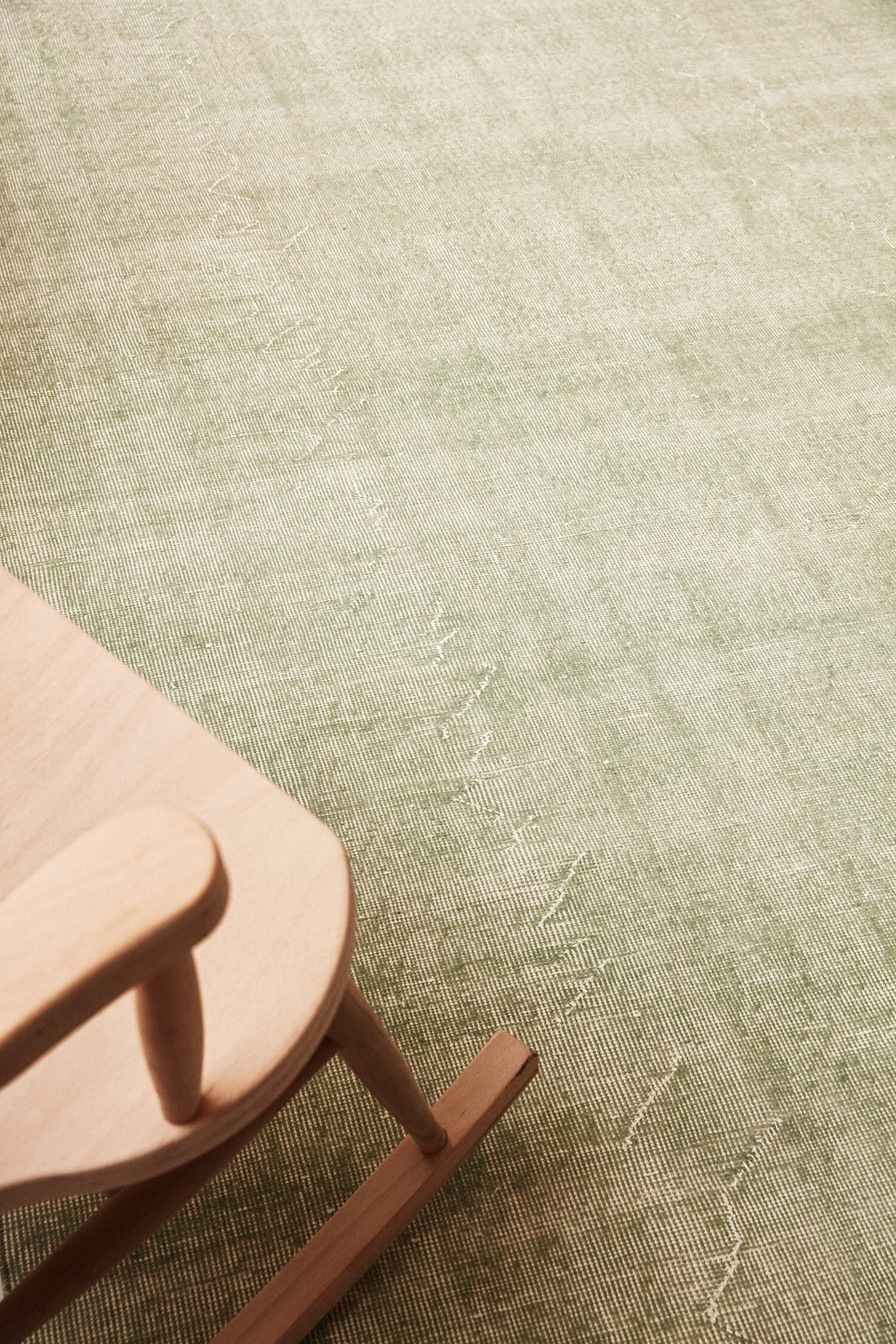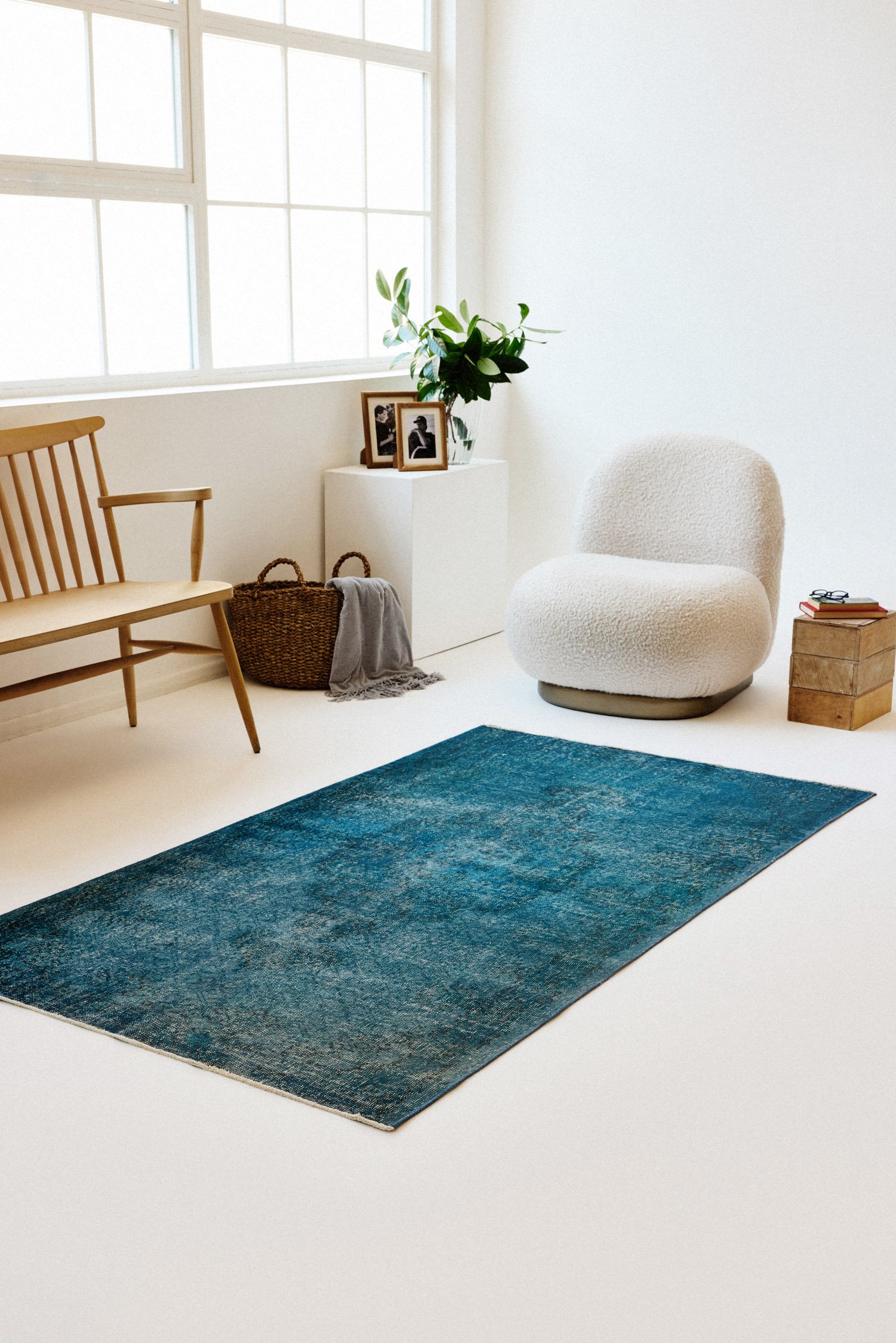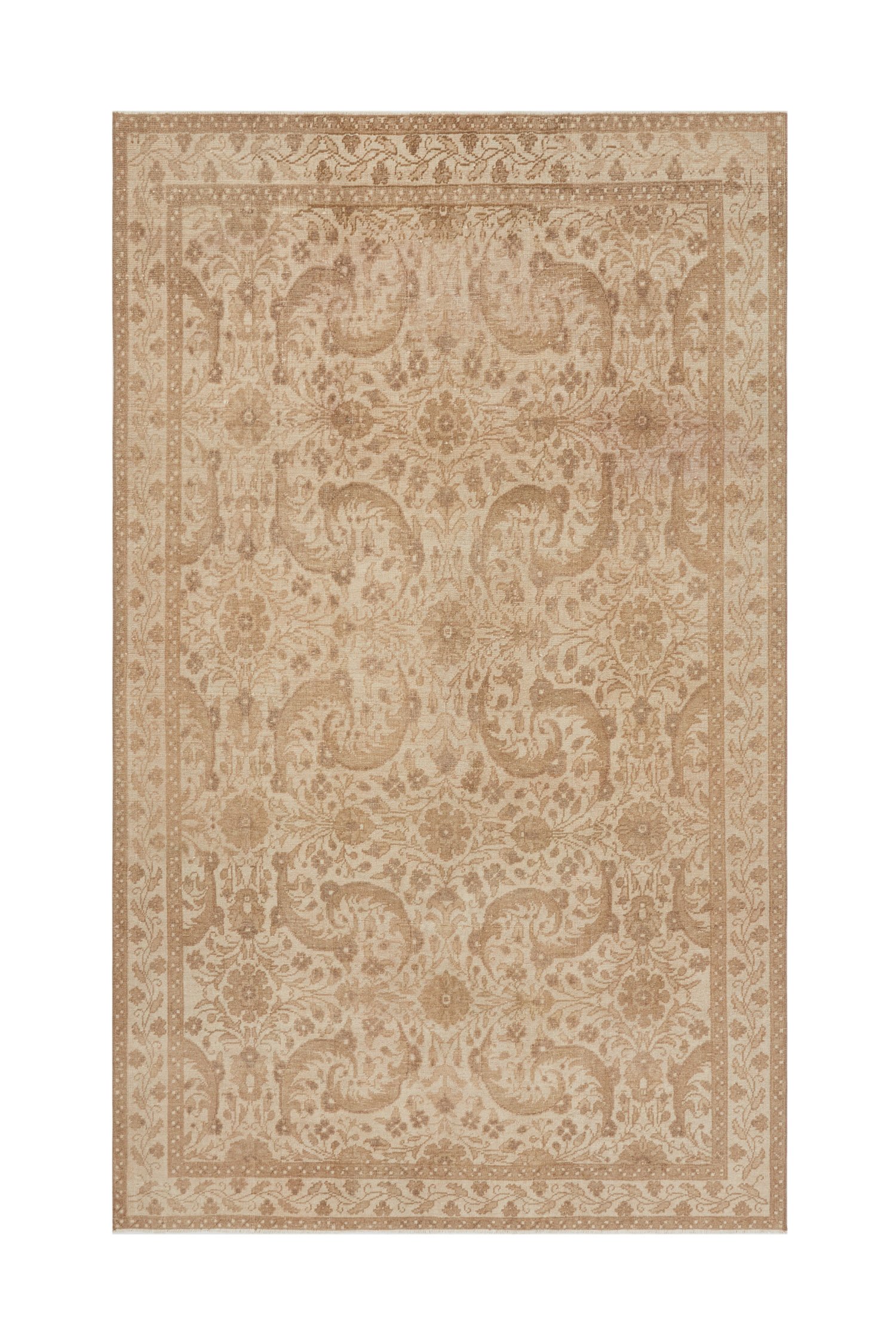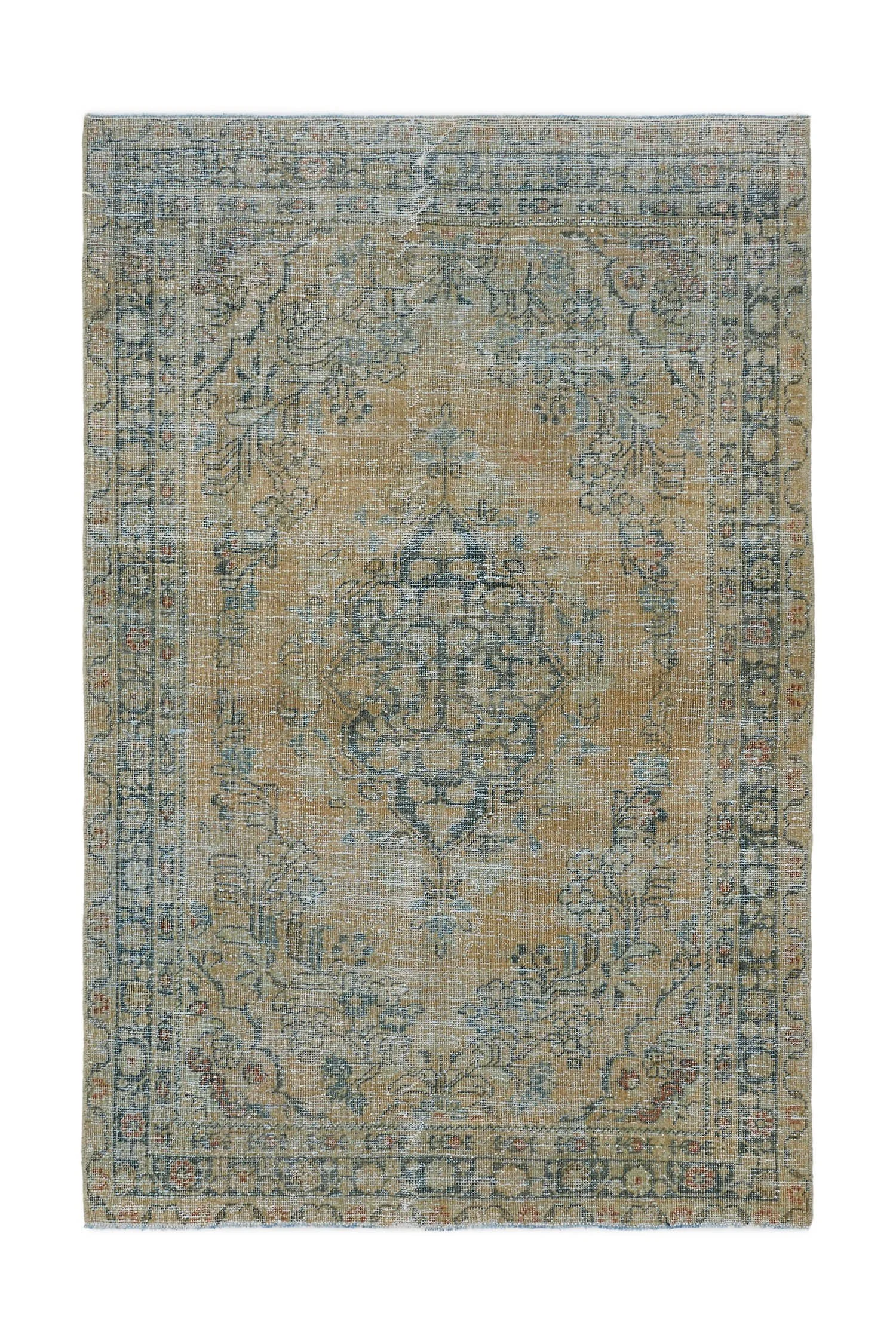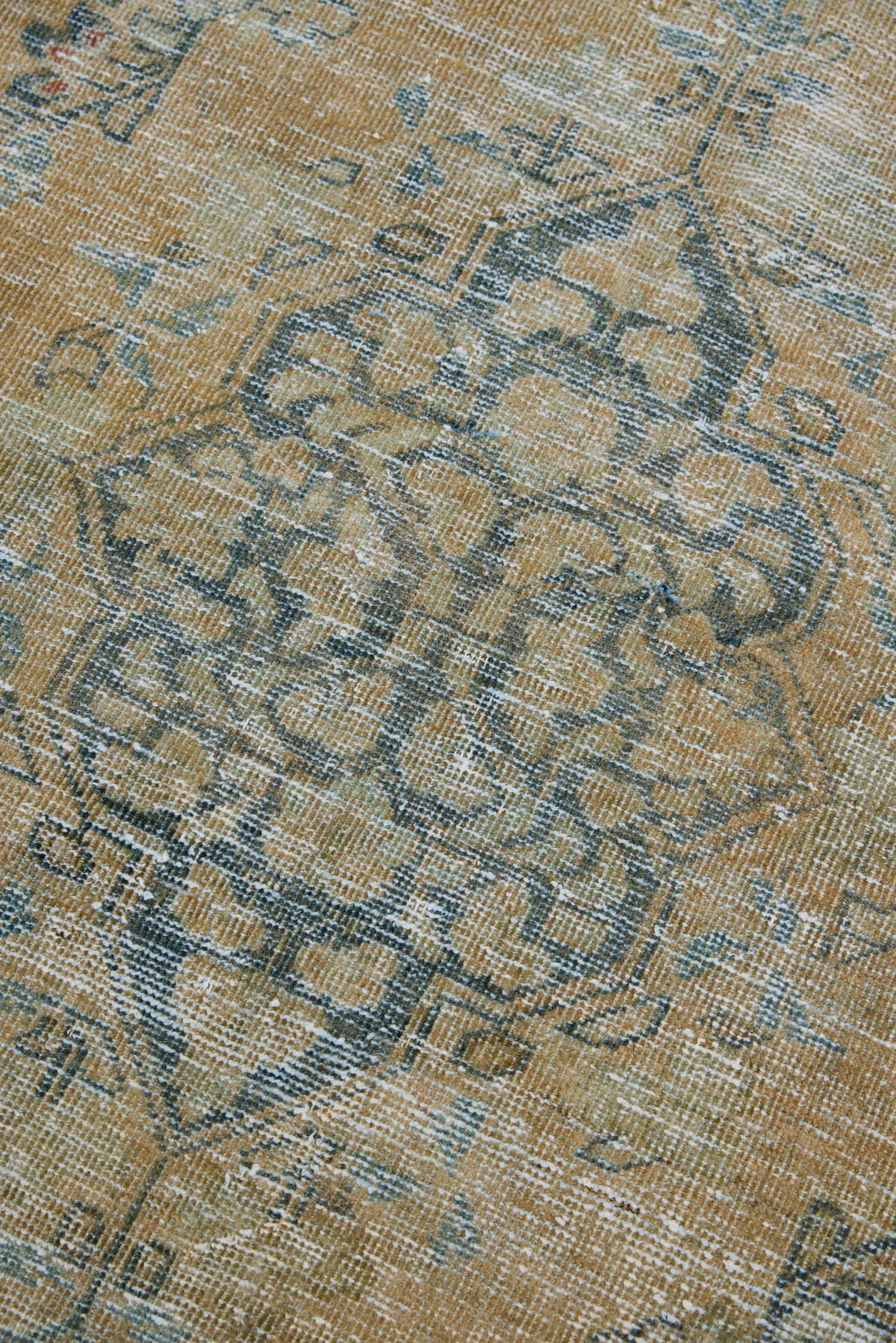Heritage and Craftsmanship
The 1930s represented a golden period for Heriz village weaving, when local artisans had perfected their traditional techniques while maintaining the bold aesthetic sensibilities that made their work distinctive. This era produced rugs that demonstrate how village traditions could achieve sophisticated color relationships and complex patterning while preserving their essential tribal character.
Design Elements
The bold central medallion establishes focal authority through its stepped geometric edges and angular definition, while contrasting blue spandrels provide balanced architectural support around the field perimeter. Densely patterned areas filled with stylized rosettes and small geometric motifs showcase the weaver's technical mastery and design sensitivity. The dynamic interplay between warm brick red and cool denim blue creates visual tension that energizes the composition while maintaining overall harmony.
Placement
At 6'6" x 8'12", this rug works beautifully in living rooms, dining areas, or bedrooms where its manageable scale can provide vibrant color and authentic character without overwhelming the space. The bold red and blue palette with ivory and camel accents creates a versatile foundation that enhances both traditional and eclectic decorating approaches.
Care Recommendations
To preserve the rug's beauty:
Rotate periodically for even wear
Vacuum regularly using a suction-only setting
Address spills immediately by blotting, never rubbing
Professional cleaning recommended annually
Avoid direct sunlight to maintain color integrity
Early Heriz rugs from this exceptional period showcase the enduring appeal of Persian weaving's village traditions, where bold geometric designs met sophisticated color sensibilities to create pieces that balance cultural authenticity with timeless aesthetic appeal. Their vibrant character continues to enliven contemporary interiors with genuine artistic heritage.




